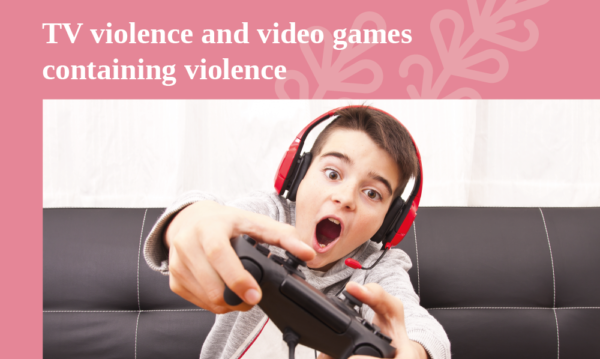An undeniable event of the twentieth century is the emergence and rapid spread of electronic media and video games. In this new environment, radio, television, movies, videos, computer games, and computer networks have played a central role in our daily lives. The increasing use of these media for information or entertainment has had a decisive influence on shaping the modern social environment and the human psyche with controversial effects on our values, beliefs, and behavior.
Reckless exposure to the “world” of media and new technologies has consequences that are particularly worrying and detrimental to viewers’ mental health. In particular, too much research has concluded that exposure to television and video games’ violence increases the risk of violent and anti-social behavior, just as can occur when bringing up a family environment with aggressive patterns and violent actions. Children exposed to such programs from an early age are more likely later to be violent and aggressive in their lives compared to children who are not so exposed.
In addition to the above, children who watch many scenes of violence in their daily lives may perceive violence as an effective way of resolving their differences and confrontations with their interlocutors. Children exposed to violence, that is, tend to believe that manifestations of violence are acceptable to the social environment. Besides, constant exposure to violent scenes through television or computer games can result in emotional desensitization to violence and a lack of response to potential incidents of actual violence. Finally, excessive visibility of violent behavior creates the perception that the world is frightening and violent. Children acquire phobias, become sensitive, timid, and mistrustive towards the world around them.
Some of the classic research in psychology shows that behavior (including aggressive behavior) increases when rewarded. In violent television programs and films, the reward for violent acts is indirect. The “reward” of viewers for a violent character’s action is to see the result of that action (e.g., watch the character receive what he wants, or the death of his enemy…). However, in violent video games, the rewards are much more immediate. Players momentarily receive many kinds of rewards for their actions in the game (e.g., points, access to new levels of the game, ability to use new weapons, exciting videos and sound effects, verbal praise). Because the rewards in violent computer games are many and more immediate than TV programs, exposure to video games with aggressive scenes and actions may be more detrimental to the child’s psyche.
Thus, we understand that exposure to television and electronic violence causes an increase in hostile and violent thoughts, feelings, and behaviors. We observe today’s young people reacting with anger and aggressive feelings when dealing with classmates, teachers, parents, and peers.
Therefore, we conclude that television violence is a threat to public health, as it leads to an increase in actual violence and aggression. Research clearly shows that fictitious violence in television and cinema contributes to increased aggression in the short term and throughout life. The projection of adverse events and scenes of violence on Tv news contributes equally to the increase in violence, mainly in suicides due to imitation and acts of aggression. Computer games can increase aggression and violence in the short term; however, no long-term research has been conducted to confirm their long-term effects.
References:
Anderson, C., A., (2010). “Violent Video Games Cause Aggression.” Opposing Viewpoints: Video Games. Ed. Laurie Willis. Detroit: Greenhaven Press, 2010. Opposing Viewpoints Resource Center. Gale. Boston Public Library.
Anderson, C., A., Carnagey, N., Flanagan, M., Benjamin, A., J., Eubanks, J., Valentine, J., C., (2004). Violent Video Games: Specific Effects of Violent Content on Aggressive Thoughts and Behavior. Advances in Experimental Social Psychology, 36, p. 199-249


